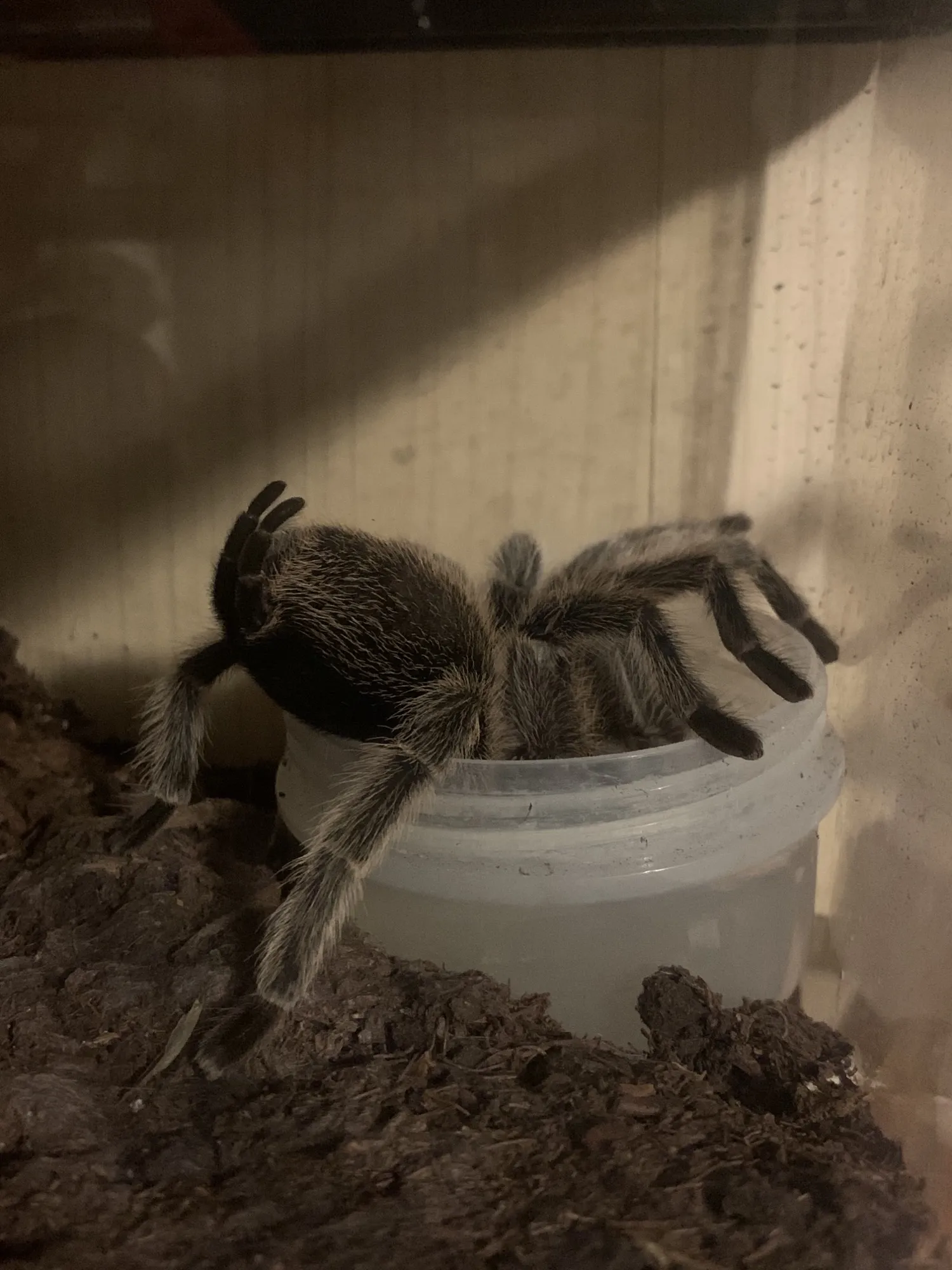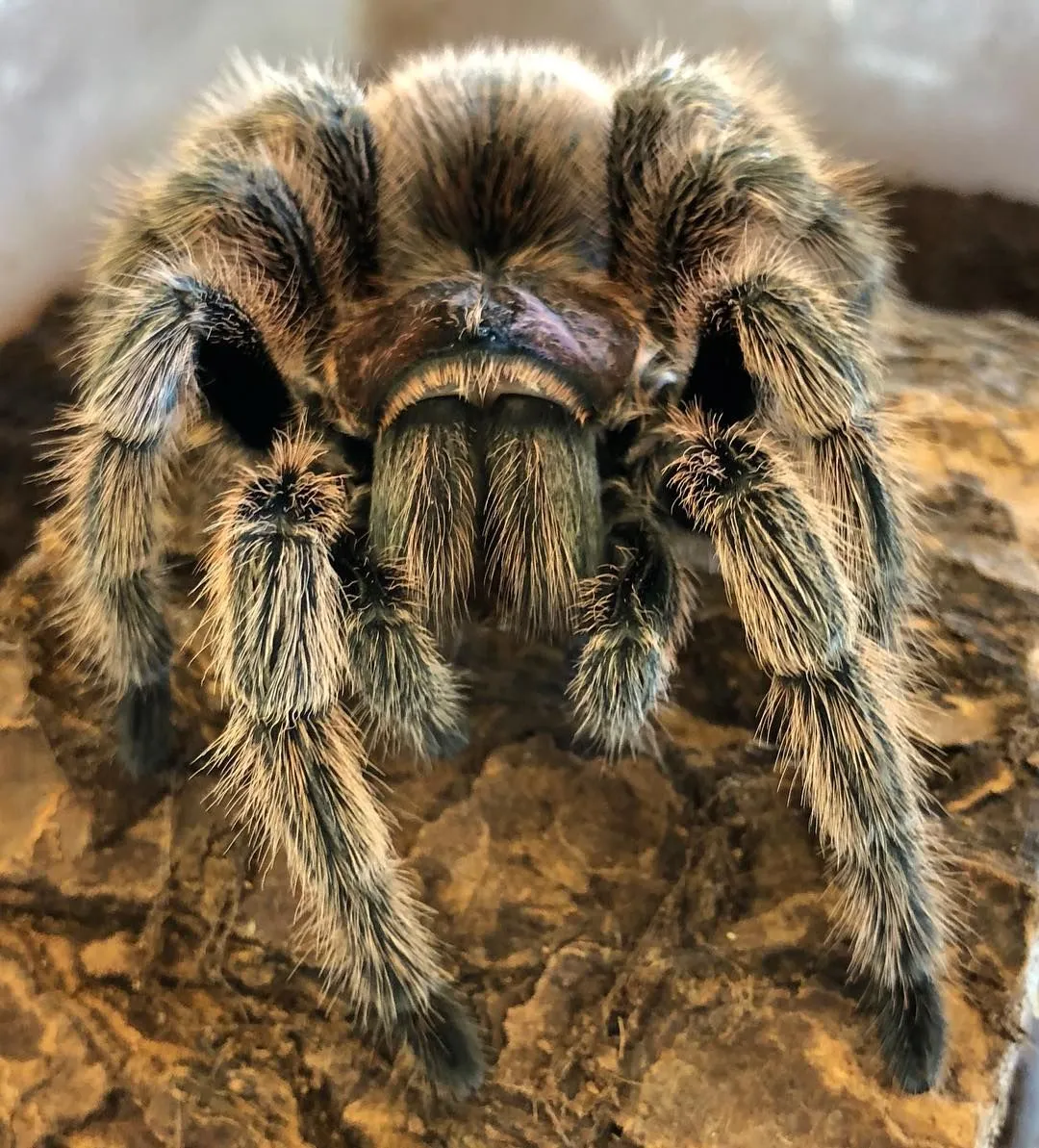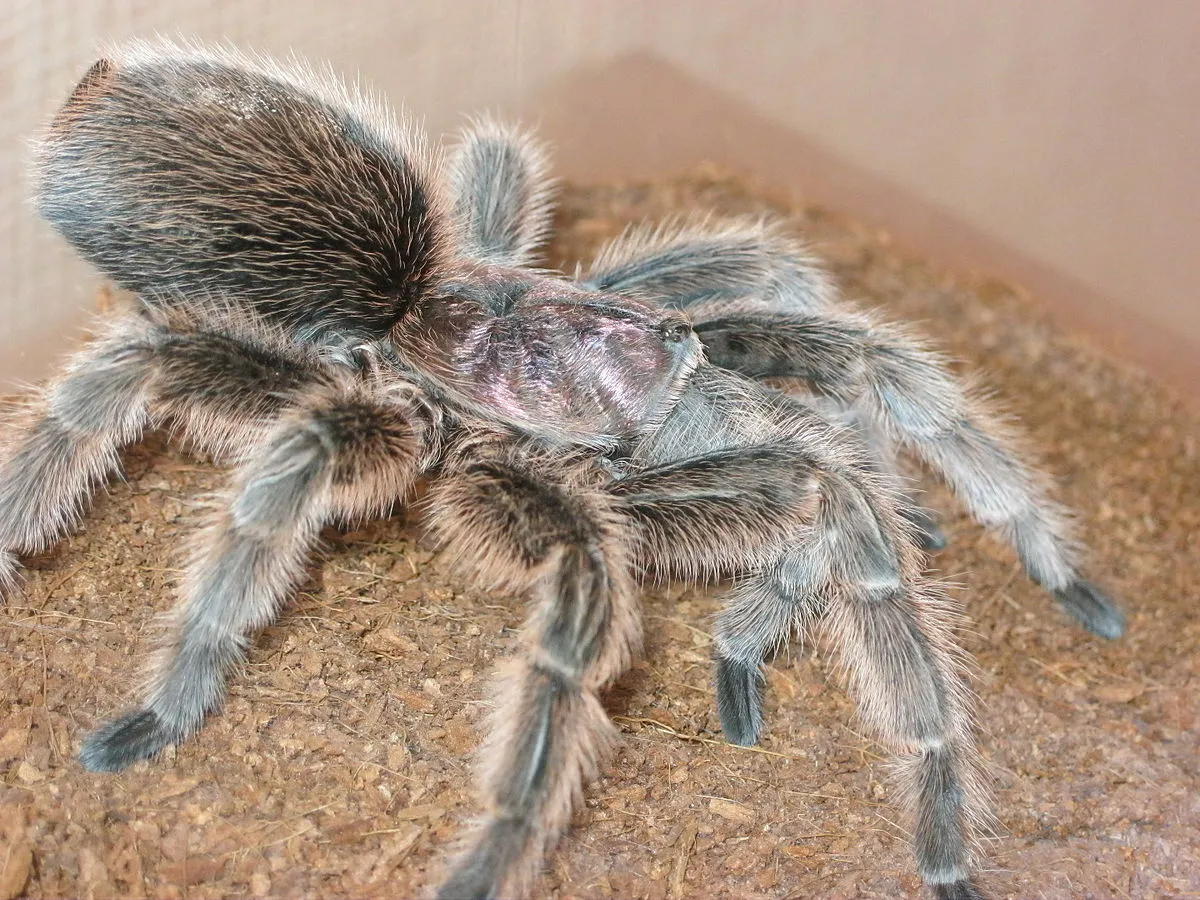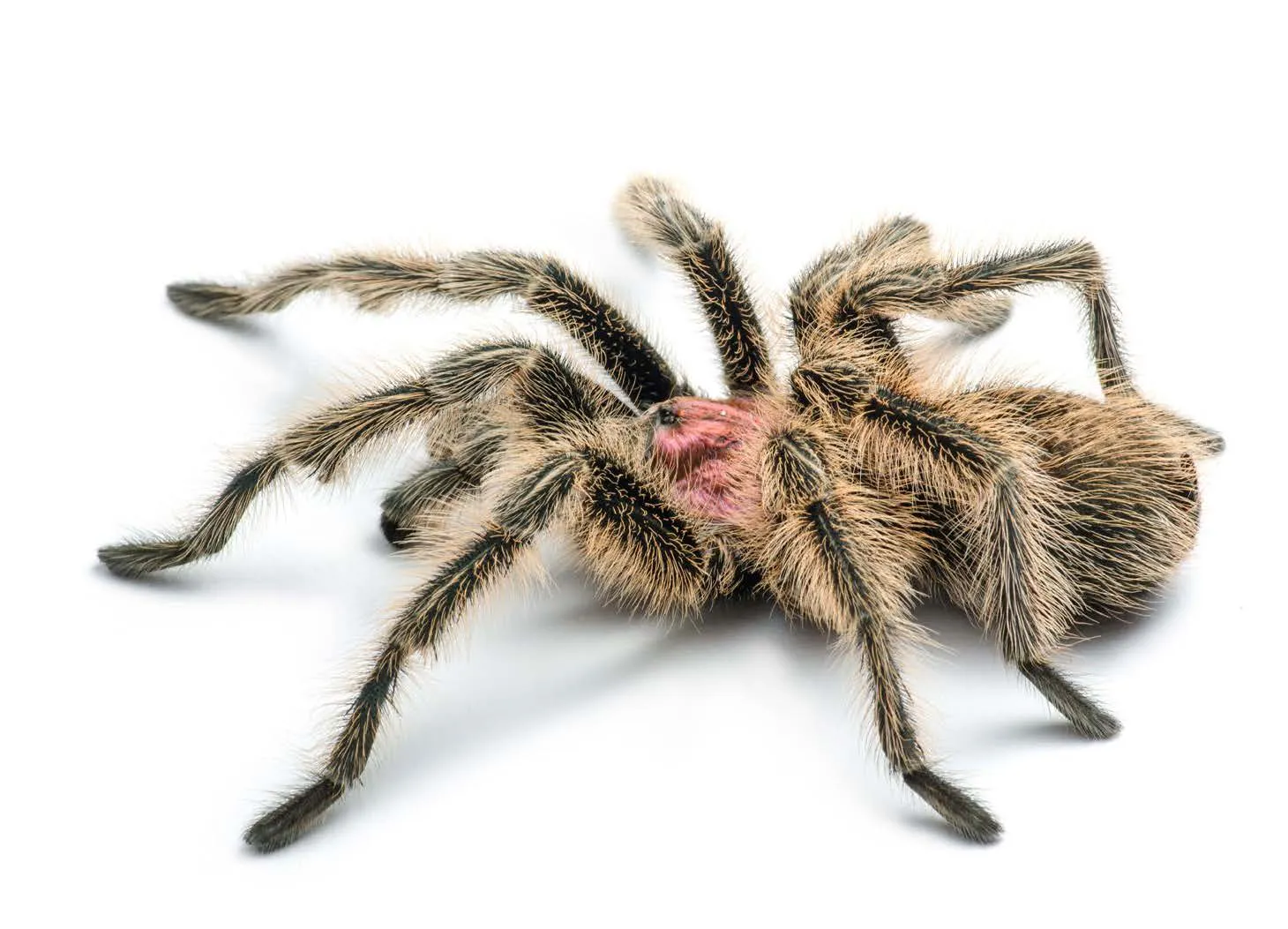Rose Hair Tarantula Full Grown Size Overview
The rose hair tarantula (Grammostola rosea), a popular pet tarantula, is admired for its docile nature and striking appearance. One of the most frequently asked questions by prospective owners revolves around their full grown size. Understanding the adult size of a rose hair tarantula is crucial for providing proper housing and care. These fascinating creatures, native to the deserts of South America, exhibit variations in size, influenced by a multitude of factors. This comprehensive guide explores the various aspects of a rose hair tarantula’s size, from the initial growth stages to the factors that can impact their overall dimensions. Whether you are a seasoned arachnid enthusiast or a curious beginner, this article will equip you with the knowledge to understand and appreciate the magnificent scale of these captivating spiders.
Factors Influencing Rose Hair Tarantula Size
Several factors can significantly impact the ultimate size of a rose hair tarantula. These include genetics, diet, and environmental conditions. Genetics play a primary role, as tarantulas from different lineages may exhibit size variations. A consistent, nutritious diet is essential for optimal growth, with a diet rich in insects like crickets, roaches, and mealworms contributing to larger sizes. Environmental factors, such as temperature and humidity, also play a role. Maintaining appropriate conditions, mimicking their natural habitat, can support healthy growth. Proper care, including suitable housing and handling, is crucial in promoting healthy growth and preventing stress that can stunt their development. Owners should be aware of the effects of these factors to support their tarantula’s well-being.
Gender Differences in Size

Gender significantly influences the size of rose hair tarantulas, with females typically growing larger than males. Sexual dimorphism, or the difference in appearance between males and females, is evident in size. Females generally reach a larger size and have a longer lifespan than males. Understanding these differences is essential when selecting a rose hair tarantula, as the housing and care requirements will vary. Females may require larger enclosures due to their greater size and are often preferred as pets because of their longer lifespans. Male tarantulas tend to mature faster and have a shorter lifespan, which owners should consider when planning their pet’s care.
Male Rose Hair Tarantula Size
Male rose hair tarantulas tend to be smaller than females. Typically, they reach a mature size with a leg span of approximately 3 to 4 inches. Their smaller size is a characteristic of their shorter lifespans and faster maturation rates. Male tarantulas invest less energy in growth, allocating more resources to reproduction. These size differences are also reflected in their overall body structure and morphology. Recognizing these variations allows for appropriate enclosure and care considerations, accommodating their specific needs during their lifetime. Male tarantulas, while smaller, are equally fascinating and interesting to observe.
Female Rose Hair Tarantula Size
Female rose hair tarantulas are considerably larger than their male counterparts. They typically achieve a leg span of up to 5 to 6 inches or more. Their larger size and slower maturation contribute to their longer lifespans. Females invest more energy in growth, resulting in a sturdier build. These dimensions make them a rewarding and impressive pet to own. It is important to provide them with adequately sized enclosures that accommodate their mature size. The size disparity between the genders is significant, influencing the care and housing needs of each tarantula.
Growth Stages and Molting

Rose hair tarantulas grow by molting, shedding their exoskeletons to accommodate growth. The frequency of molting decreases as they mature. Young tarantulas molt more frequently than adults, typically several times a year. Each molt allows them to increase in size and develop. Recognizing the molting process is crucial for providing proper care. During the molting period, tarantulas are vulnerable and require specific environmental conditions. Understanding and respecting the molting process supports their healthy development. Molting is a critical aspect of their life cycle, reflecting their growth and development as they reach their full grown size.
First Molt
The first molt is a significant milestone in a rose hair tarantula’s life, often occurring within the first few months. During this initial molt, spiderlings increase in size, developing their basic characteristics. Provide a secure and stable environment for the spiderling during this process. The first molt provides a crucial insight into the spiderling’s health and development. Careful observation during this stage sets the tone for future care routines. Recognizing the first molt is an important step in understanding their growth.
Subsequent Molts and Size Increase
After the first molt, rose hair tarantulas continue to molt periodically. Each molt brings about an increase in size. As they mature, molting frequency decreases. Adults may molt only once a year, or even less frequently. Monitoring their molting cycles provides insights into their health and growth rate. The frequency can be influenced by factors like feeding and environmental conditions. Observing the molting process is a remarkable experience for any tarantula owner, showcasing their growth and development. The increasing size after each molt demonstrates their progress towards their full grown size.
Nutritional Impact on Size

A well-balanced diet is critical in determining the full grown size of a rose hair tarantula. A diet rich in nutrients supports healthy growth and development. Providing a variety of insects, such as crickets, roaches, and mealworms, is essential. Overfeeding can accelerate growth, but it may also lead to health complications. Conversely, insufficient nutrition can stunt growth. The nutritional choices made by an owner greatly impact the tarantula’s ultimate size and overall well-being. Responsible feeding is essential for ensuring a healthy and properly sized rose hair tarantula.
Optimal Diet for Maximum Size
An optimal diet for a rose hair tarantula includes a variety of insects. Crickets and roaches provide a good source of protein, while mealworms can supplement the diet with essential nutrients. The frequency of feeding should be adjusted based on the tarantula’s age and size. Spiderlings require more frequent feeding than adults. Ensuring the insects are gut-loaded with nutritious food before feeding is also essential. Offering a varied and balanced diet can significantly contribute to the tarantula’s healthy growth, allowing it to reach its full potential size. The right diet can maximize their growth and health.
How to Measure Your Tarantula
Measuring a rose hair tarantula involves determining its leg span, the distance from the tip of one leg to the tip of the opposite leg, and also its body length. This measurement provides a good estimate of its size. It is often easier to measure tarantulas after a molt, as their new exoskeletons are less prone to shrinking. Careful and gentle handling is essential when measuring, as stressing the tarantula can impact its health. Documenting the tarantula’s size at different stages provides valuable information about its growth progress. The regular measurement helps in monitoring the tarantula’s development and assessing its overall health and growth.
Measuring Techniques

Use a ruler or measuring tape to measure the leg span of a rose hair tarantula. Gently extend one of the legs and measure the distance across. Ensure the tarantula is in a safe environment to avoid stress. Take the measurement with the tarantula on a flat surface. Body length can be measured by carefully observing the body. Regular measurements help in tracking growth. Always prioritize the safety of the tarantula during measurement. Measuring accurately requires patience and a gentle approach.
Average Size Expectations
Generally, the average size of a full grown female rose hair tarantula is around 5 to 6 inches in leg span. Males are typically smaller, averaging between 3 to 4 inches. Variations may occur based on genetics, diet, and environment. The expected size also depends on individual growth rates. Understanding these averages helps in setting realistic expectations and ensuring proper care. Remember, a healthy, well-cared-for tarantula is more important than achieving maximum size.
Common Misconceptions About Size
There are many misconceptions about the size of rose hair tarantulas. One common myth is that bigger is always better. Size is just one aspect of their health and well-being. Another misconception is that a tarantula’s size can be rapidly increased by overfeeding. Excessive feeding can lead to obesity and health problems. Focusing on providing balanced nutrition and a stress-free environment is far more important than striving for a specific size. Understanding and dispelling these misconceptions is crucial for proper tarantula care.
In conclusion, the full grown size of a rose hair tarantula is determined by a combination of factors, including genetics, diet, and gender. Females typically grow larger than males. Providing appropriate care, including a nutritious diet and suitable housing, is essential for your tarantula’s well-being. By understanding the various aspects of size and growth, you can provide the best possible environment for your rose hair tarantula, ensuring its health and happiness.
